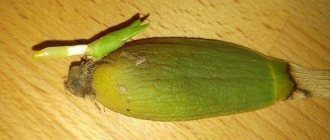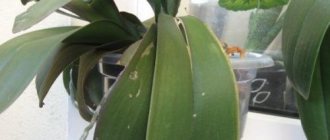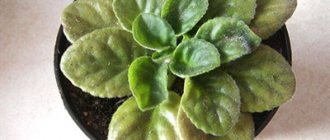Diagnosing problems with plants is similar to diagnosing diseases in people - that is, this is not an easy matter and requires experience. Still, let's try to figure it out and describe all reasons, according to which the indoor rose does not fulfill its main purpose - it does not produce abundant and beautiful flowering.
Why doesn't my indoor rose bloom?
The main reasons for the lack of flowers:
- Little light.
- Unsuitable soil.
- Indoor climate.
- Lack of nutrition.
- Excess nutrition.
- Incorrect formation.
- Diseases and pests.
Let's look at each reason in more detail:
Light
Roses are light-loving plants .
The best window for an indoor rose is southwest or southeast. An eastern window is also acceptable, but you should make sure that the variety is not one of the most capricious. South-facing windows are only permissible if they are not too hot - roses have smaller flowers and leaves in the heat, and flowering does not last as long. Analyze your own conditions. South window to south window - discord. Maybe there is a tree in front of your window, and the window itself is on the first floor, so even on the south window the home rose may simply lack light. If the rose does not have enough light, or the apartment has only northern windows, you can organize additional lighting with artificial light . Roses feel great in this kind of lighting, if, of course, it is chosen correctly, and besides, modern choice allows you to arrange this without compromising the design of the room.
The length of daylight required for a rose to bloom should be 10-12 hours.
Perhaps the rose has enough light, but the bright rays of the sun heat up the pot too much (especially for dark plastic pots) and the soil dries out, heating the roots. Rose roots still like relative coolness. Therefore, it is better to immediately plant the rose in pots of light shades, or organize shading near the pot.
Taking care of your health
Diagnosing problems with plants is similar to diagnosing diseases in people - that is, this is not an easy matter and requires experience. Still, let’s try to figure it out and describe all the reasons why an indoor rose does not fulfill its main purpose - it does not produce abundant and beautiful flowering.
Why doesn't my indoor rose bloom?
The main reasons for the lack of flowers:
- Little light.
- Unsuitable soil.
- Indoor climate.
- Lack of nutrition.
- Excess nutrition.
- Incorrect formation.
- Diseases and pests.
Let's look at each reason in more detail:
Improper soil and replanting
Roses prefer soil with neutral acidity . Unsuitable acidity leads to the absence of flowers, or to their impoverishment. To check the acidity of the soil, it is enough to buy a special indicator; it is inexpensive and is sold in almost any flower supply store. Acidity should be at pH 6.5-7.5.
It is also worth paying attention to the mechanical properties of the soil . Many people do not attach importance to this, but this is one of the key factors in hydrating and nourishing the plant. The soil can hold too much moisture, which, combined with the coolness in the room, contributes to root souring and fungal diseases. Or, on the contrary, the substrate may be too loose, water- and breathable (this is often the case with purchased soils with a high peat content) - the rose in such soil will regularly dry out, especially if the room is hot.
In our practice, we encountered similar cases - too small a pot and heat, such a rose had to be watered several times a day, and still the owner did not have time, the lower leaves of the plant regularly turned yellow and flew off, it grew poorly and, of course, could not bloom - replanting in a more spacious pot and more nutritious, dense, moisture-absorbing soil solved the problem.
Pay attention to the size of the pot - is it too small, too spacious, has the plant recently been replanted, did it have to be replanted at the wrong time (autumn or winter)?
You should not expect flowers from a freshly transplanted plant , even if it produces buds. It will take 1-2 months to adapt and restore the root system; it is better not to overload the plant and remove the buds.
Many are in a hurry to replant a rose immediately after purchase, knowing that the soil in which the plants are sold is not entirely suitable for their permanent habitat. You shouldn’t always rush into this; look at the condition of the flower. If the rose is healthy and seems to be doing well, you should give it time to acclimatize to the new conditions for several weeks, and only then proceed with replanting.
Climate
In the rooms, as a rule, the temperature is acceptable for roses, but this culture perceives temperature changes during drafts extremely painfully; even in open ground, roses are recommended to be planted in places protected from the wind.
If there is no place in the apartment that is convenient for roses without drafts, you can organize protective fences - it is enough to protect the plant to half its height. Another common problem is dry air, which can be solved by misting the plant daily or every two days. At temperatures above 22 °C, spraying is not enough. Any of these activities will be required:
- Shower for plants - carried out once a week, the leaves are washed generously in the shower, with low pressure, the water is selected at a comfortable temperature. It is better to carry out the procedure in the evening.
- You can purchase a special humidifier. For a rose, the optimal humidity level is 70-85%, this is slightly higher than the humidity comfortable for humans (60%), but nothing prevents you from combining various methods of hydration, including local ones for the plant. For example, a humidifier is running in the apartment, creating a humidity level of 60%, the rose is sprayed every other day - this will be enough.
- Sometimes there are recommendations to place containers of water nearby - this is not the most optimal way; it is better to place the plant in a bowl with wet peat.
Roses are reluctant to bloom in hot weather. If the temperature is above 28 ° C, photosynthesis processes slow down, the flower consumes moisture only to cool itself. Accordingly, the leaves and buds do not receive enough nutrition. First of all, of course, the flowers suffer. Therefore, in hot summers you can expect weaker flowering. Ideally, of course, to observe a strict temperature regime during the budding period, with a decrease in daytime temperature to 15-18 ° C, and night temperature to 15 ° C; these are the rules that are followed during industrial cultivation. However, it is difficult to organize such conditions in an apartment, just remember that a hot loggia or balcony, even facing, for example, the southeast, but very hot during the day under the scorching rays of the sun to a temperature of 30 ° C, is not the best place for blooming roses. Or, at least, it is worth providing the plants with sufficient humidity in this case - above 60%.
Lack of nutrition
One of the common complaints is “the rose’s leaves are turning yellow and falling off - what’s the matter?” may be due to nutritional deficiencies:
- Pale shade of leaves along the central vein , young leaves are too light, leaves fall off, shortened shoots, weak growth, weak flowering or its cessation altogether - lack of nitrogen. It is worth carrying out foliar feeding.
- Gradual yellowing between the veins (the veins and a small area along them remain green) is chlorosis, a lack of iron.
- Spots and yellowing of the leaf blade between the veins , the veins themselves are bright green - lack of potassium.
- Yellowish spots with a burgundy tint and sagging are rare - this is a lack of phosphorus.
Fertilizers should be taken especially carefully shortly before flowering, during the formation of buds and - a moment that many people forget about - after flowering. It is likely that the reason the rose has no flowers is that it exhausted its strength last time and now simply cannot recover.
Why else can leaves turn yellow and fall off?
In addition to the lack of nutrients, there are three more main reasons: disease, overwatering, underwatering . We discuss the first one below.
Underwatering is an obvious problem: drying out soil and dry, yellow lower leaves that fall off, while the petiole is dry, and the tips of such leaves have begun to dry out. Very often this problem is confused with another - soil soaking . When the roots get wet and overwatering (perhaps the plant is planted in too dense soil), the roots begin to die, the leaves lack nutrition, they turn yellow, but a little differently than during drought. They seem to lose their tone, become soft (not brittle), fall off without losing elasticity, that is, the petiole of the fallen leaf will be soft to the touch.
A flooded plant needs urgent resuscitation (removal of rotten roots, treatment, planting in fresh soil, careful observation and care), otherwise it will completely die in the near future.
Reasons for the lack of flowers
The reason for the cessation of flowering of hibiscus can be any imbalance:
- direct sunlight or lack of light;
- overmoistening of the soil or too infrequent watering;
- soil poor in nutrients or excess fertilizer;
- a cramped pot or a tub that is too spacious;
- a sharp drop in temperature or sweltering summer heat.
First of all, it is necessary to determine the optimal conditions for hibiscus flowering and ensure them as much as possible. If you want to wait for double roses as soon as possible, and you are very upset that the hibiscus does not bloom, analyze your mistakes in care and hurry to correct them.
In a houseplant
Improper care is the main reason for lack of flowering. It is important to understand that the care of indoor and garden ornamental crops may differ.
Hibiscus loves light. If a pot with a flower is in a darkened area of the house, then you are unlikely to wait for your beauty to bloom. However, do not rush to move the flowerpot into direct sunlight. Do not forget that ultraviolet rays can cause burns. The optimal place for placing a flowerpot with hibiscus, as experienced gardeners note, is the south and southeast side, where bright, diffused light predominates.
When kept at home, the flowering of Chinese roses usually lasts for 2-3 months, starting in mid-summer and ending in the fall, in September.
Did you decide to replant a flower when it grew large, as a result of which the plant stopped blooming? A pot that is too large is one of the common reasons for hibiscus not blooming. Until the roots fill all the free space in the flower pot, the plant will grow vigorously and refuse to bloom. Be patient and wait for your handsome man to decorate your home rose garden with beautiful flowers.
At a garden flower
The lack of flowering can be observed not only in indoor, but also in garden hibiscus. As in the previous version, when we discussed indoor floriculture, the reason for the lack of flowering of a plant grown outdoors in the garden may be improper care. Most often, novice gardeners try to water the flower abundantly. However, according to the recommendations of gardeners with many years of experience, hibiscus does not like soil that is too wet during the growing season.
Another reason for the lack of amazingly beautiful buds is excess nitrogen in the soil. Don’t get too carried away with fertilizers; you need to feed the plants moderately and in a timely manner.
Also, do not forget that the lack of pinching and pruning of an ornamental bush can cause a flowering hibiscus to refuse to throw out new buds and eventually stop blooming altogether.
Various diseases and insects can interfere with the flowering of indoor or garden hibiscus. Among the diseases that are characteristic of ornamental crops of the Malvaceae family are root rot, fungal infections, as well as chlorosis of infectious and non-infectious types.
Awakening
Hibiscus wakes up at the end of winter; now it needs sunbathing, good nutrition, abundant watering and warmth. It is very important not to miss this transitional moment and to provide the indoor plant with the necessary conditions in a timely manner. You can notice that the rose has woken up by the growth of young leaves. Do not wait for the buds to appear, because if you are late in moving the flowerpot to a warm, bright place, the hibiscus will not bloom soon - it will shed the first emerging flowers. Reasons: stress, changes in microclimate and mechanical damage (tender buds fall off even from barely perceptible swaying of the branches).
Advice! To ensure that the hibiscus blooms more abundantly and has a beautiful crown shape, carefully trim the old branches before it awakens. The tree will quickly sprout new shoots and become more lush and attractive. In addition, double roses appear only on young branches.
Lighting
The Chinese bush will not have full flowering if it is planted in the shade. Even partial shade will not suit the plant to bloom, only the maximum amount of diffused light. Hibiscus growing outdoors should be in a place where there is no direct burning rays of the sun or strong wind.
Beginning gardeners often make the mistake of changing the location of the flowerpot: they move the indoor plant from place to place, turning it to the light in different directions. It is absolutely forbidden to do this, since with such care the hibiscus will never open its buds. The tree should remain motionless all summer.
Watering
For lush flowering, the plant needs proper watering. If the room temperature is low and the hibiscus soil has a lot of moisture, the roots may begin to rot. At the first sign of illness, the bush immediately drops its buds and color. If measures are not taken, the leaf begins to turn yellow and fall off, the rose gets sick and dies.
Excess nutrition
Oddly enough, this is a more common problem than a disadvantage. Beginning gardeners often begin to care for the plant too diligently, and as a result, they contaminate the soil . You should also monitor the dosage of fertilizers - do not exceed the concentration indicated in the instructions, and it is even better to reduce it. Fertilizer should be watered correctly - the soil must first be slightly moistened .
Signs of overfeeding? Lush greenery - with excess nitrogen, the plant fattens and begins to go into the “tops”. You can also determine overfeeding if the rose is susceptible to disease and grows poorly, but other aspects of care are in order.
Incorrect formation
Flowers are located on stems, so the quality of future flowers directly depends on their strength and quality.
Pruning for lush flowering is necessary for all roses, including indoor ones (usually indoor roses are Polyantha, Floribunda, Chinese - they all gratefully accept pruning). The most important thing is the timing of pruning . It is carried out in the spring - when the plant enters the active growth phase (determined by swollen buds), in addition, it is important to take into account the light regime and nutrition of the plant. If the daylight hours are too short, the shoots will become elongated and weak, and they will not be able to produce abundant and large flowers. Pruning too late, when the plant has already directed its energy to the growth of existing shoots, will be too energy-consuming for the crop, and as a result, such a flower will begin to lag in growth.
Before pruning, you should make sure that the plant in the room will be provided with at least 10 hours of daylight - if less, the shoots will inevitably stretch out and you won’t have to wait for lush summer flowering.
Why doesn't hibiscus bloom?
Hibiscus rosa-sinensis with glossy dark emerald leaves and large double flowers, most often scarlet in color, is a living decoration of offices, restaurants, cafes, and public halls.
Many housewives also fall in love with hibiscus - they are happy to grow a beautifully flowering ornamental tree at home. Experienced flower growers claim that Chinese hibiscus is an unpretentious indoor plant; provided optimal growing and nutritional conditions are provided, it pleases owners for a long time with beautiful flowers and rich foliage. In contrast to their statements are the complaints of some amateur flower growers. On many thematic forums, you periodically “hear” their questions and requests: why doesn’t hibiscus bloom, what am I doing wrong, help with advice. An obvious fact: with its flowers, the Chinese rose thanks its owners for proper, balanced care. Sometimes excess care turns into a scourge for a houseplant and can lead to its death or improper development. Growing conditions that are too “good” (in your opinion) will provoke active growth of the tree - you can’t take your eyes off the green foliage with an emerald tint, but waiting for the buds to appear is in vain.
Diseases and pests
One of the most common reasons for the lack of flowers. Rose is a crop that is not very adapted to indoor conditions, so it is often affected by pests. Dry air and insufficient humidification contribute especially strongly to their appearance. The most common problems:
- Spider mite. Without exaggeration, almost all rose growers encounter it. The mite is not always noticed; it appears on the underside of the leaves in the form of small red dots. On young shoots you can see white dots - larvae. The method of control is treatment with drugs (“Fitoverm”, “Strela”, “Neoron”, “Diazanon” or “Aktellik”, “Vertimek”, “Akarin”, “Agravertin”). Prevention – maintaining optimal humidity. Non-flowering plants that do not have decorative value, for example in winter, can be kept in special mini-greenhouses.
- Scale insects and false scale insects look like brownish plaques. Control methods are similar to those described above, with spider mites. You can clean it by hand, but it will take persistence. A combination of methods is effective: bathing, manual cleaning, Fitoverm.
- Rose aphid. Light green insects, usually clearly visible themselves, as well as the results of their activity (the plant is deformed, covered with spots, punctures, characteristic plaque, leaves and buds fall off), multiply very quickly. They can get into the house with other plants, during drafts, when transplanted into contaminated soil, and even “arrive” on the fur of pets. For control, both insecticides and folk remedies are used (mustard powder, garlic-soap solution, infusion of orange peels, etc.).
- Powdery mildew is a common scourge of indoor roses. A grayish coating that seems to cover the shoots, leaves and buds - this is exactly it. All parts of the plant covered with such powder are mercilessly removed, and the plant is treated with fungicides or other antifungal drugs. One of the reasons for the appearance of diseases is too sharp changes in day and night temperatures.
- In conditions of high humidity, other fungal diseases can affect the rose . It makes no sense to go into their names, but if it is hot and humid, dark, as if weeping spots are visible on the leaves, the leaves turn yellow and fall off - the rose is infected with a fungus. All infected leaves and parts of the plant should be removed and sprayed with fungicide.
- Viral diseases are yellow stripes or spots, they are easy to recognize because there is some geometry in their pattern. The affected parts of the plant, or better yet the whole plant, must be destroyed. There are no chemical treatments.
The best disease prevention is proper care . Especially temperature and humidity conditions. When air humidity is more than 90%, roses begin to suffer from powdery mildew, above 95% - gray mold, downy mildew, ordinary powdery mildew, when humidity is less than 50% - plants are easily affected by powdery mildew and spider mites.
From time to time it makes sense to spray indoor roses with preparations to maintain immunity: Epin, Zircon.
Question answer
How often do domestic roses bloom?
It depends on the type and variety . There are varieties that can actually bloom almost all year round, excluding the dormant period (it can be artificially reduced). But, as a rule, an indoor rose bought in a store will, at best, bloom from May to November, or several times a year (2-3 times).
The roses bloomed all summer, in September the leaves became very weak, the plant is growing poorly, the leaves grow and fall off, it’s already January, and the rose still looks bad. Doesn't bloom. What's the matter?
It's simple: many novice gardeners, seeing a rose in a pot, for some reason begin to think that its contents are similar to many other evergreen indoor crops. But roses are a deciduous plant, they definitely need a period of rest . For wintering, roses are placed in a bright and cool place, watering is reduced (just so that the soil does not dry out to dust) and left alone - just inspect the plant; falling leaves are normal. In spring - replant, prune, lightly fertilize a week after replanting.
What to do? The rose dries, the leaves fall off, the buds appear, but not many, they also fall off, some shoots have dried up???
Apparently, the plant is overdried . All dried branches should be trimmed, leaving a length of 3-4 cm, the plant should be watered, but moderately, and covered with a plastic bag. Place this improvised greenhouse in a bright, moderately warm place. As soon as new shoots appear, you should begin to accustom the rose to fresh air.
I accidentally dried out the rose, the leaves withered but did not fall off, what should I do?
You can try to “soak” the plant. If the pot is made of unglazed ceramic, you can completely dip it in water and let the rose stand until the pot itself and the earthen ball are completely wet. Place the plant in a plastic pot in a deep tray, water it well, wrap it in a plastic bag, leave for 1-2 hours, after which time the leaves will restore their turgor.
I water normally, without overwatering, but the rose dries out and the lower leaves fall off, the buds don’t appear at all, some shoots dry out, what could be the problem?
Probably the pot is too small and the rose does not have enough nutrition ; it is worth replanting the plant. Only by the method of transferring, so as not to damage the root system, otherwise you will not have to wait for flowering soon.
How to make an indoor rose bloom?
In general, if a rose is properly cared for, there is no need to force it - it will bloom. In addition, there are varieties that can bloom almost all year round with very little interruption. You should choose self-rooted roses (however, all indoor specimens should be like this, although this is not always the case), with bright green leaves that are clean from stains. After flowering, it should be pruned short, and a dormant period should be ensured at a fairly cool temperature - roses deprived of such a period either bloom poorly or do not bloom at all.
What to do if the rose stops blooming?
In autumn, this is a natural process; the plant goes dormant. If this happened in another period, all the reasons described above should be analyzed.
Is it possible to replant a blooming rose in a pot?
Theoretically it is possible, but it is not very clear why risk the plant flowering? In any case, even a gentle transplant or transshipment is stressful for the plant, and most likely all the buds of such a flower will fall off. If you want to see the rose in a more beautiful container, it is not necessary to replant it, you can simply put it in such a container.
How to achieve abundant flowering of indoor roses?
Proper care, fertilizing, a dormant period, and, of course, the right choice of variety; not all varieties, even with good care, will be completely covered with flowers.
How to water roses to make them bloom?
As for water, water only with settled (at least 24 hours) water, it is better to collect rainwater, in winter it is best to use melted water or just put snow in the pot. Regarding fertilizers from root dressings, we can recommend the following:
- urea solution (in spring, immediately after pruning, this will give the plant the nitrogen necessary to gain green mass),
- a solution of ash, mullein, chicken droppings, horse manure, saltpeter, potassium magnesium, extract from banana skins (these are potassium fertilizers, they are used in June for abundant budding),
- universal mineral fertilizers, for example, Kemira, or nettle infusion, or organic matter (manure, compost, droppings) - they are applied after flowering is completed so that the plant regains its strength.
- organic fertilizer, or fertilizer based on phosphorus and potassium (in the last month of summer, before wintering)
Do not feed during flowering! In each of these four cases, one type of fertilizer is chosen. Water with fertilizers no more than once every two weeks, and, of course, you need to focus on the plant’s own conditions and well-being.
Watering with a sugar solution (2 teaspoons per 1 glass of water) can give good results . During the growing season, roses are watered with this solution once a week, weakened ones - once every five days.
How to replant an indoor rose after purchase
Let's not continue about the bad. Let's say the rose managed to avoid the diseases described above. She had grown and the pot became too small for her. It's time to transplant the miniature "queen of flowers" into a new pot. I'll tell you how to properly transplant an indoor rose into a new pot.
First, you need to wash the store-bought pot with warm water. Next you need to pour a drainage layer, which consists of rubbed polystyrene foam. Broken bricks or fragments of clay pots will do. Another option for indoor drainage is small pebbles.
The soil for planting decorative roses consists of three types of soil: humus, turf soil, and sand. The soil is poured in a layer of about five centimeters. Next, this is compacted and the roots of the rose bush are planted on this “pillow”. After this, you need to pour in about sixty milliliters of water. The bush is hidden in a room where it is warm. Do not water for the next six days. The rose bush can be returned to its original place only after a week has passed. And after two to three weeks, they add fertilizer consisting of minerals. And then they continue to care for the indoor rose, regularly watering it and feeding it, until the pot becomes small again.











